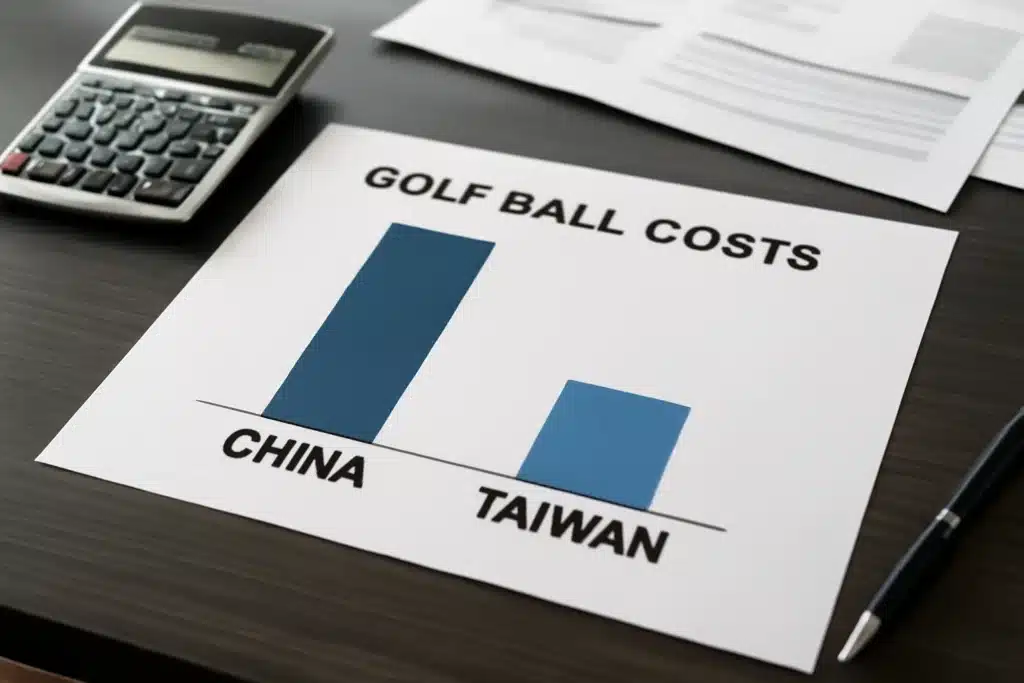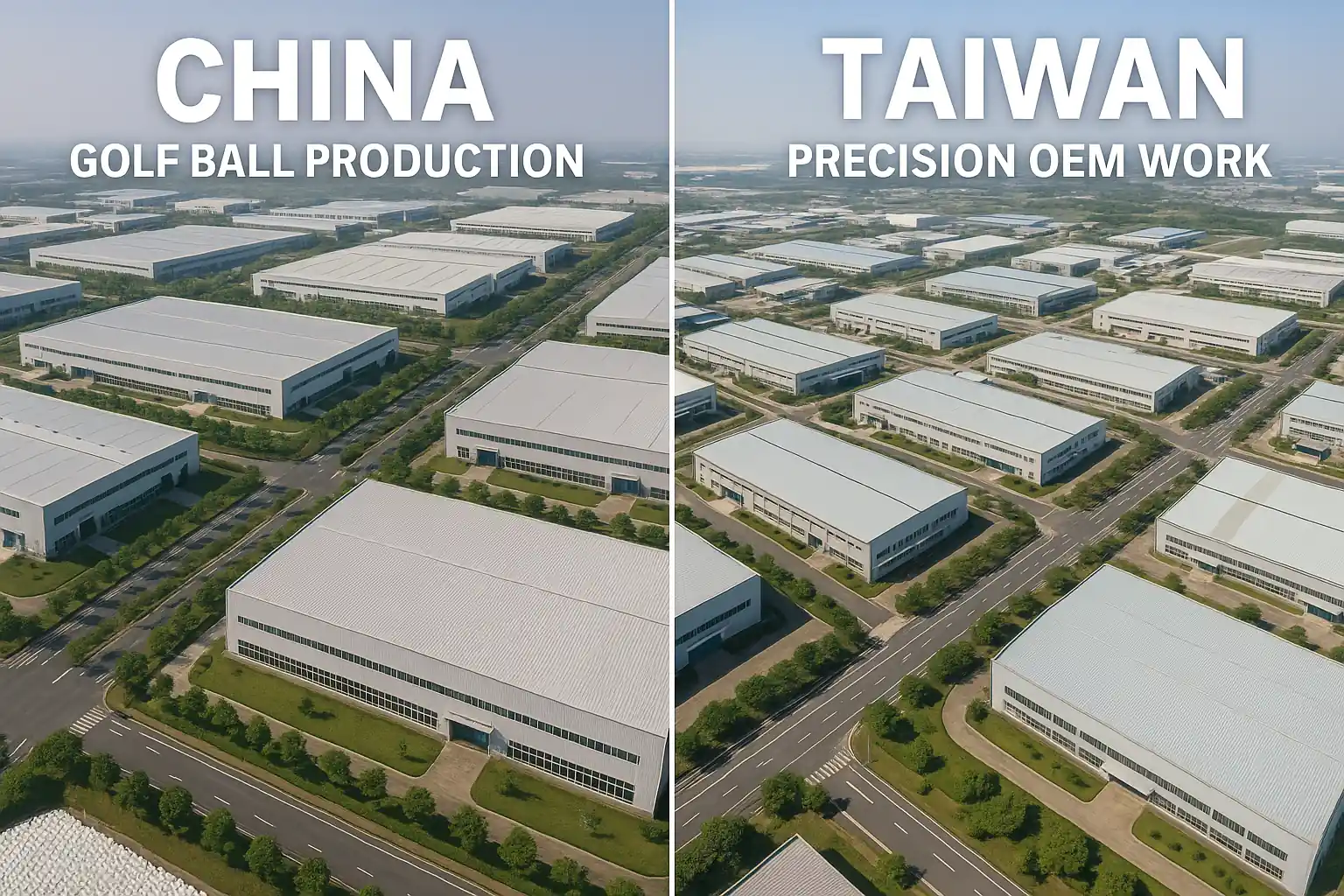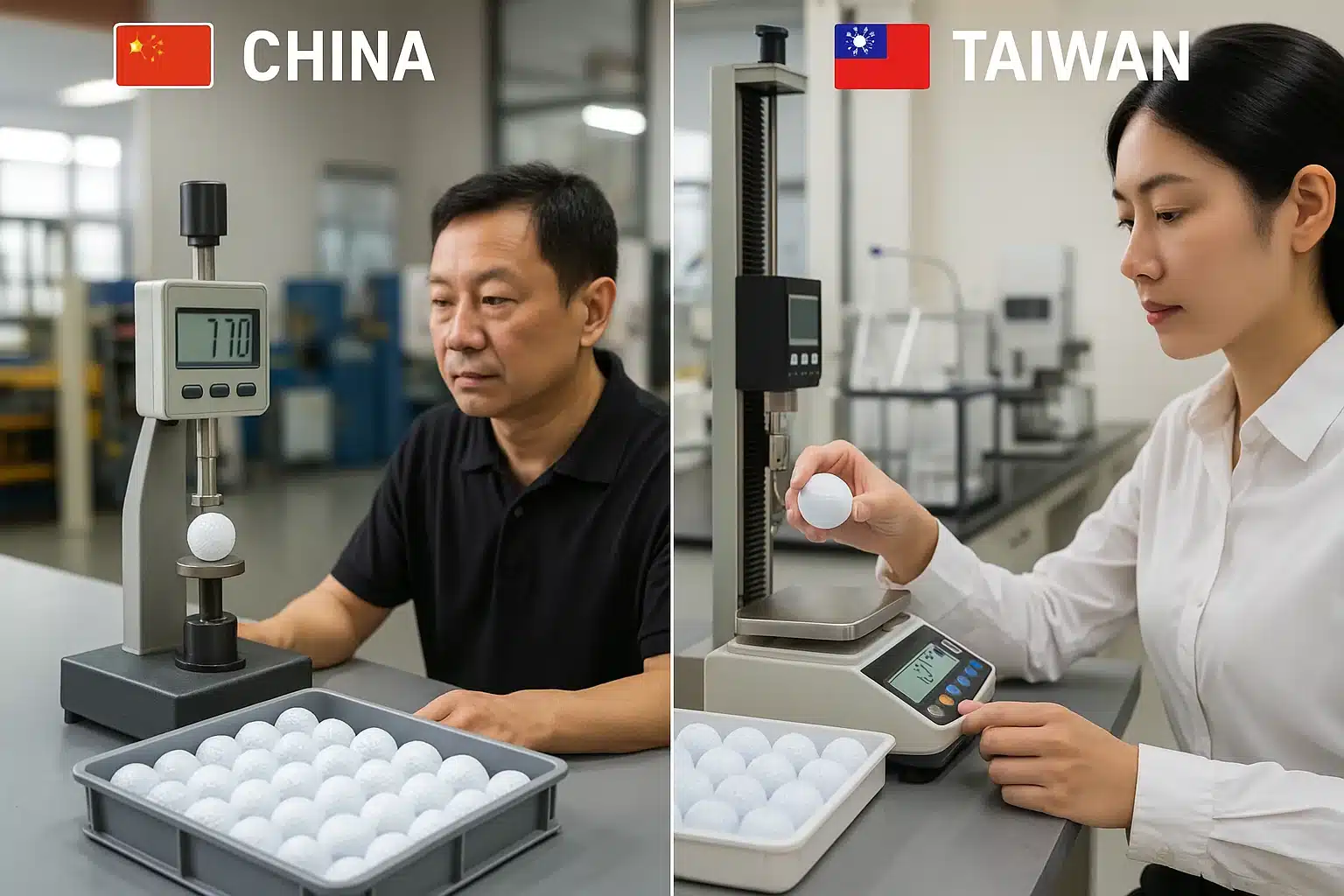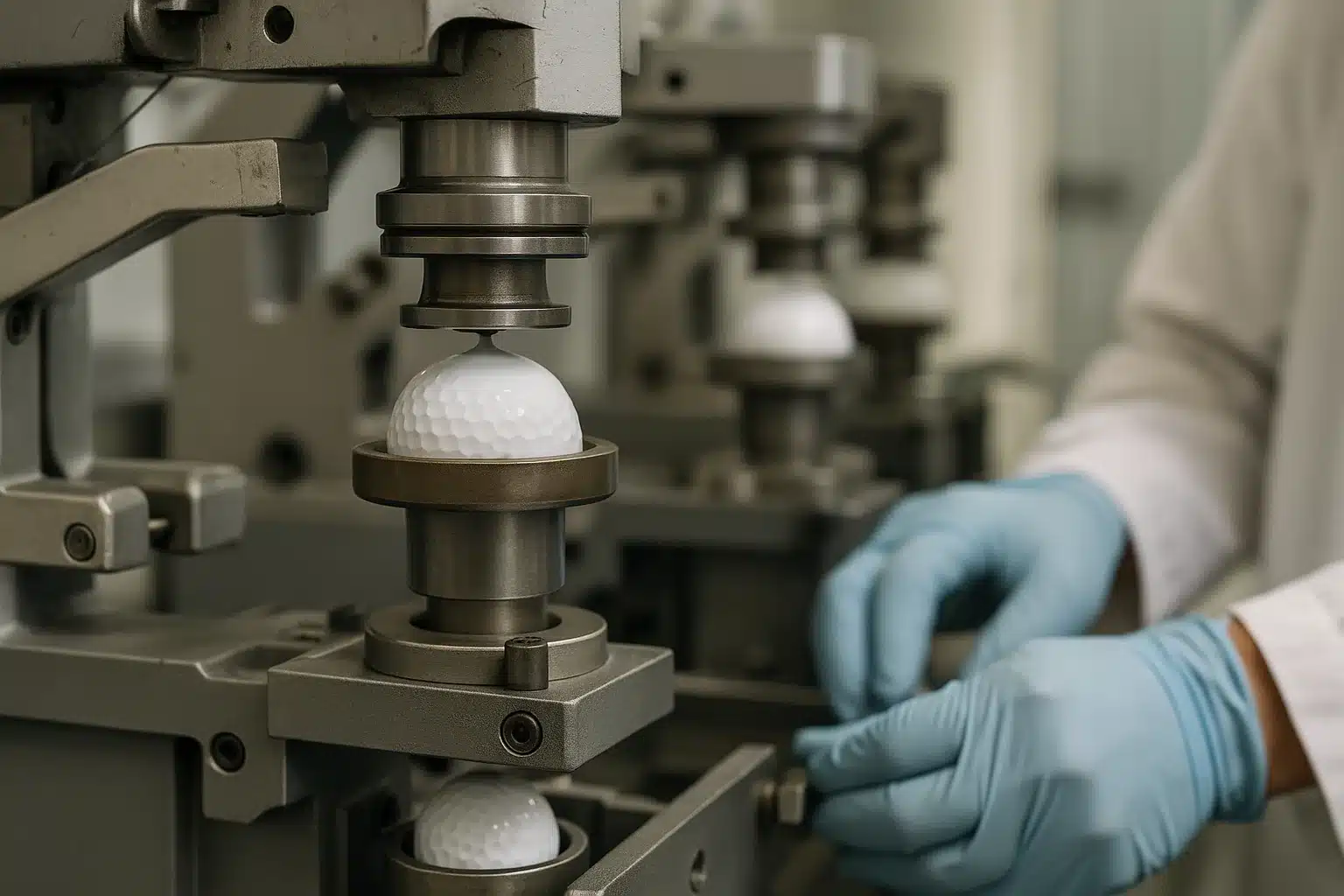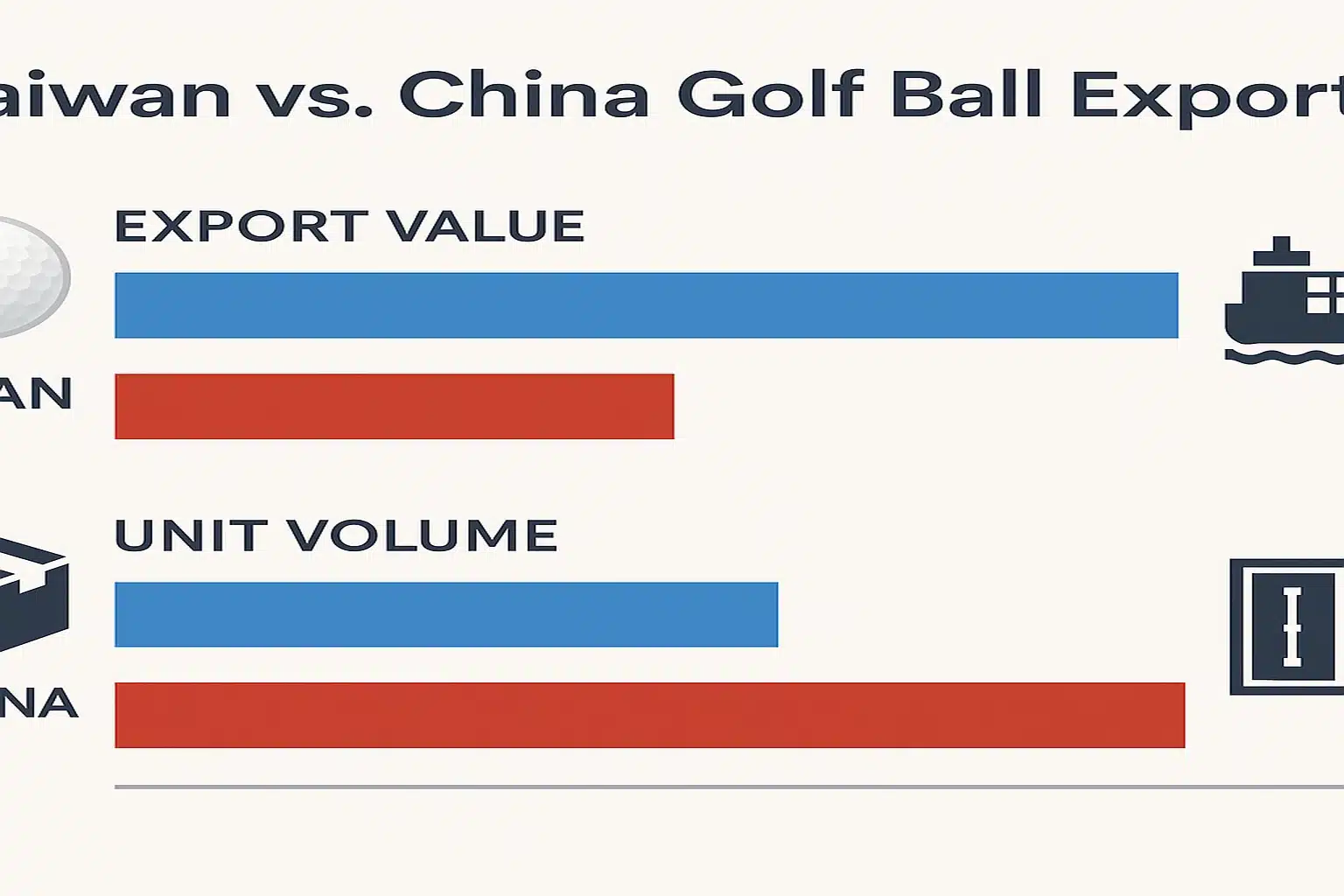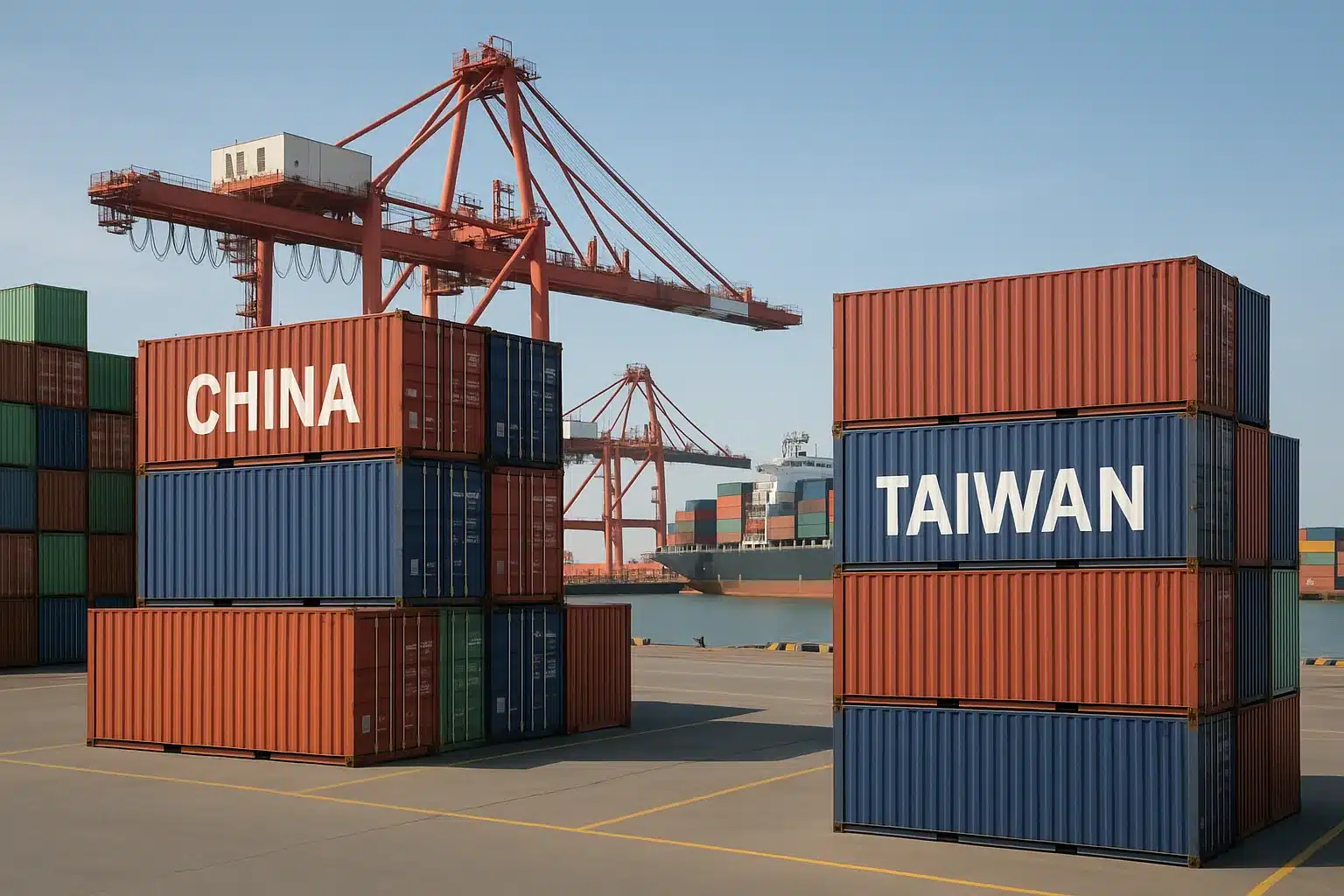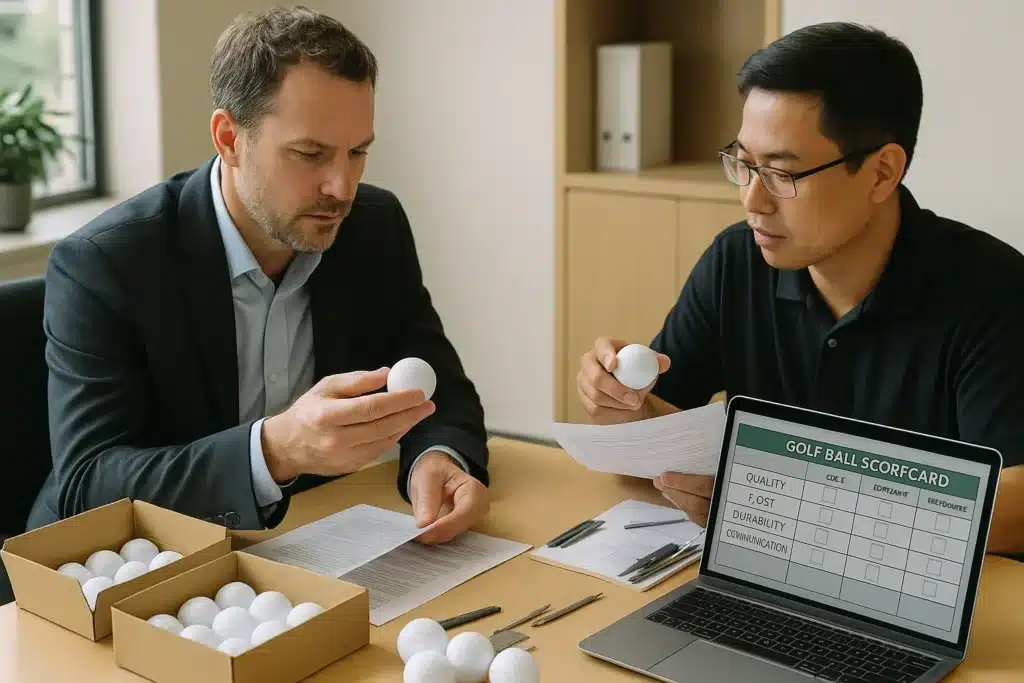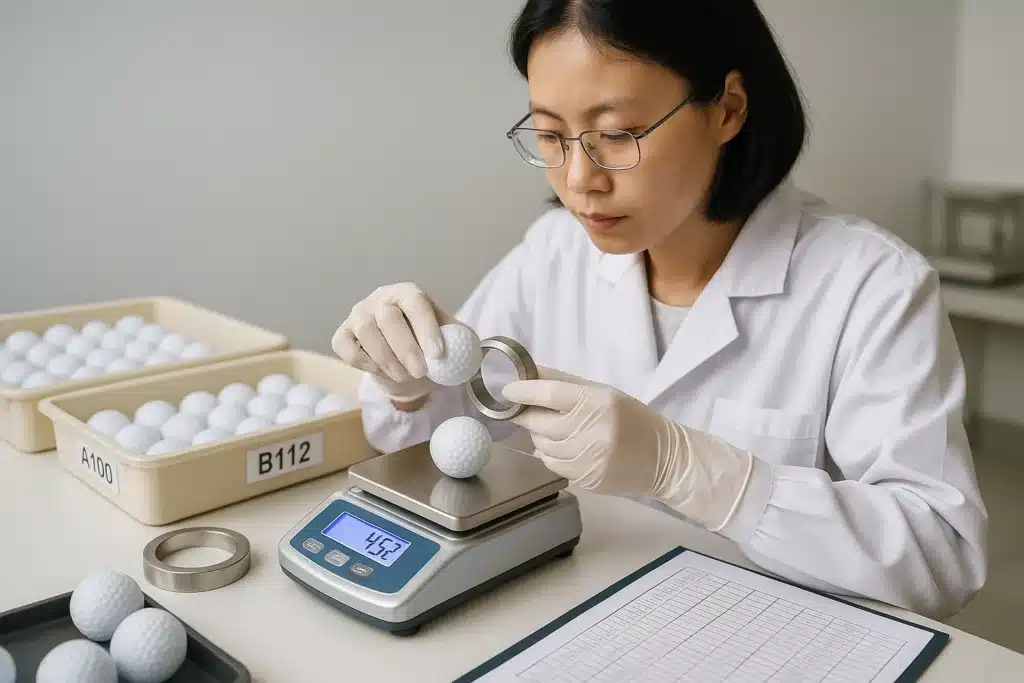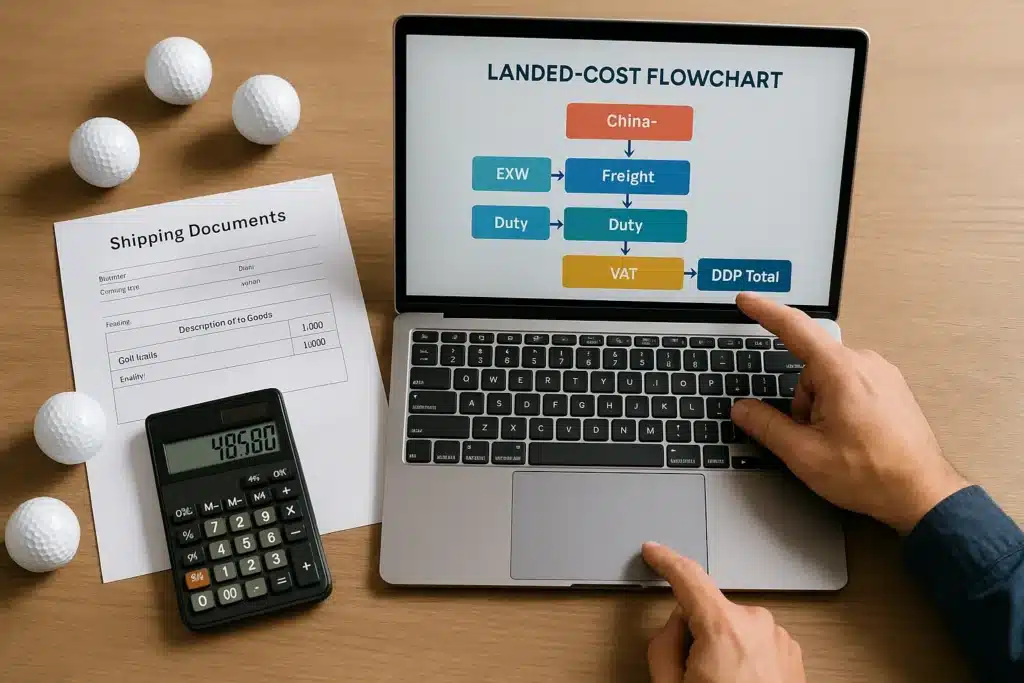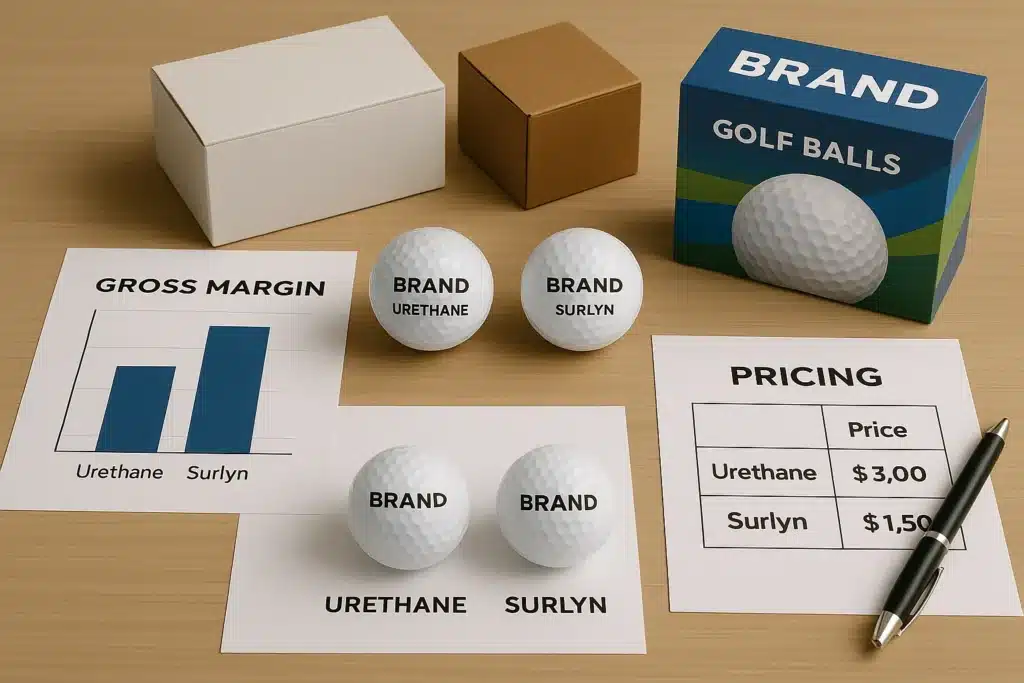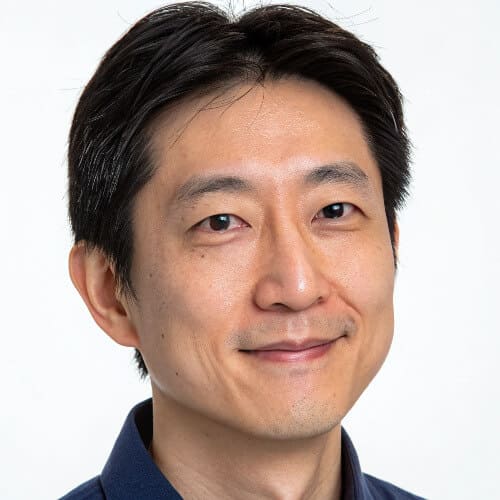For brands sourcing golf balls in bulk, the China vs Taiwan sourcing decision comes down to performance vs price. Taiwan leads in high-consistency, cast urethane balls favored by DTC brands and elite players. China dominates volume and cost, especially for two-piece Surlyn practice or promo balls. We compare structure, quality, cost, and risk to help you decide.
What are the key sourcing differences between China and Taiwan?
China is cost-driven and high-volume; Taiwan excels in consistency and premium performance. In 2023, Taiwan (as "Chinese Taipei") exported over $279M in golf balls, leading globally. China exported $116.9M with 286M balls, averaging $0.41 each. Taiwan’s higher unit values mirror cast urethane complexity and multi-layer architectures.
How does their market positioning differ?
Taiwan is a premium OEM hub; China is the value-volume giant. Taiwan specializes in multi-layer, tour-grade cast urethane balls for DTC brands like Vice and for SKUs that must pass stringent CV and USGA checks. China covers the entry to mid-tier segment with fast, low-MOQ Surlyn balls, broad SKUs, and strong packaging capacity for promotions.
What about manufacturing capabilities?
Taiwan offers tighter CV control, multilayer options, and advanced materials; China is flexible with scalable output. Taiwanese OEMs like Foremost and Launch emphasize weight, compression, and USGA-compliant consistency with refined core/mantle chemistries. Chinese suppliers are strong in Surlyn builds, quick turnaround, high-capacity molding, and automated printing.
How do average export values reflect quality tiers?
Taiwan’s per-ball export value is ~2× China’s, reflecting higher-grade construction. Taiwan’s implied 2023 export unit price was ~0.66+/ball versus China’s ~0.41/ball, confirming tier segmentation for bulk golf ball sourcing.
What are the unit-economics signals buyers should watch?
Price ladders map directly to material and layer count. Two-piece Surlyn balls carry the lowest resin and cycle-time costs; 3–4+ layer cast urethane balls add PU chemistry, extra curing, and tighter rejects, raising cost but boosting spin profiles and feel. Match price bands to target channels before RFQ.
Taiwan leads in cast urethane precision, with OEMs trusted by top DTC brands. Foremost and Launch have engineered balls for brands like Vice, Callaway, and Topgolf. Their consistency, mixing discipline, and formulation control are critical for tour-like performance where short-game spin and cover durability are non‑negotiable.
What gives Taiwan an edge in quality control?
Tighter tolerances and mature supply chains enable Taiwan to meet R&A/USGA specs reliably. CV for weight/compression is tightly managed; in‑line scales and compression rigs flag drift early. PU prepolymer quality, mantle rheology, and oven profiles are standardized to cut batch-to-batch variance for high consistency cast urethane balls.
What are typical MOQs and lead times in Taiwan?
Expect higher MOQs and steadier—but longer—schedules. For premium cast urethane SKUs, common MOQs sit around 20k–50k balls per model/colorway, with 45–70 day lead times after sample sign‑off. Added pad time is needed for PU cover casting, aging, and paint cure. Forecasting and slot reservations are essential.
Are there major risks to consider with Taiwan?
Yes—recent capacity shocks and legal scrutiny require diligence. The 2023 Pingtung fire at Launch constrained premium supply. Buyers should validate current capacity, backup molds, insurance clauses, and phased deliveries before placing large POs. Dual-tooling across two Taiwanese lines reduces downtime exposure.
What types of buyers benefit most from Taiwan sourcing?
Brands needing stable, high-performance tour-like balls with tight branding tolerances. Taiwan suits DTCs and specialty retailers targeting USGA compliant golf balls manufacturers performance, where repeatability and cover finish quality drive customer retention.
Why do cost-sensitive buyers choose China for golf balls?
China excels in value, speed, and MOQs for bulk Surlyn balls. With over 280M units exported in 2023, China is the go‑to for practice, promo, event, and price-driven retail lines. For MOQ for golf ball sourcing, Chinese factories often accept 3k–10k per model, enabling multi‑SKU programs.
Where is China’s golf ball manufacturing concentrated?
Main hubs include Fujian (Xiamen, Quanzhou, Zhangzhou) and Guangdong (Dongguan). These clusters integrate core mixing, compression molding, injection Surlyn covers, pad printing, and packaging. Close proximity to carton, ink, and sleeve vendors improves total landed cost and speed.
What are the key material and process advantages in China?
Local access to Surlyn, PBR rubber, TPU/PU, and fillers keeps costs low and supply steady. Domestic compounding and die/mold shops shorten tooling cycles. Automated dimple engraving, faster injection lines, and in‑house packaging lines make China ideal for seasonal promotions or large events.
How do you manage quality variance in China?
Standardize specs, then verify relentlessly. Lock Surlyn grades, core recipe ranges, and dimple patterns in the PO; require golden samples, pilot runs, and AQL ≥2.5 inspections. Add PPAP‑style documentation (process flow, FMEA, control plan) to raise baseline quality in value‑tier factories.
What does the data say: Taiwan vs China golf ball exports?
Taiwan led global exports by value in 2023; China shipped massive unit volumes. The value gap reflects cast urethane complexity, while China’s unit share aligns with two‑piece Surlyn dominance. Both routes can fit a portfolio if you segment by performance tier and channel economics.
| Metric | Taiwan (Chinese Taipei) | China |
|---|---|---|
| 2023 Export Value (USD) | $279M | $116.9M |
| Export Volume (balls) | 425.7M (via WITS) | 286.2M |
| Avg. Unit Price (Est.) | ~$0.66 | ~$0.41 |
| Typical Product Tiers | Cast urethane, 3–4+ layer | Two‑piece Surlyn |
| Representative Strengths | Spin control, finish | Speed, cost, SKUs |
| Typical MOQ | 20k–50k/model | 3k–10k/model |
| Typical Lead Time | 45–70 days | 25–45 days |
How do tariffs, logistics, and Incoterms shift the picture?
Landed cost depends on route and term—not just ex‑works quotes. Compare EXW vs FOB Xiamen/Kaohsiung vs CIF target port. Model ocean transit (e.g., 14–22 days to USWC), port congestion, and drayage. Use buffer stock during peak seasons and staggered shipments to lower stockout risk.
How to choose: Taiwan vs China for golf ball sourcing?
Match your product tier and brand promise to the right region—tour feel = Taiwan, scale savings = China. Start with a portfolio map: premium SKUs (urethane, multilayer, tighter tolerances) vs volume SKUs (Surlyn, event/promo, entry retail). Then design make/buy splits and negotiate line time.
When should you choose Taiwan?
You need tour-quality feel, tight specs, or DTC-grade consistency. Taiwan fits compact lineups where brand fidelity matters: softer compression urethane balls (~75–90), precise paint smoothness, and long-run consistency for repeat customers and reviewers.
When should China be your go-to?
You need low-cost practice balls, fast lead times, or varied SKUs. China is ideal for price-driven lines with bulk shipment needs and flexible MOQs. Use it to power bundle offers, range packs, event kits, and private‑label drops with fast reprints.
Is dual sourcing a smart option?
Yes—split high-end and volume lines between Taiwan and China. Validate tour‑grade SKUs in Taiwan; scale mid/entry SKUs in China. Share dimple and stamp files securely, and maintain independent color/ink standards so art moves cleanly across sites.
What are typical spec bands by region?
Agree on KPI ranges early to avoid later disputes.
| KPI (example) | Taiwan Premium Target | China Volume Target |
|---|---|---|
| Compression (Atti) | 80 ± 3 | 90 ± 4 |
| Weight (g) | 45.6 ± 0.3 | 45.6 ± 0.4 |
| Cover Shore D (Surlyn/PU) | PU: 55–60 | Surlyn: 62–68 |
| Roundness (mm dev.) | ≤ 0.10 | ≤ 0.15 |
| Paint/Gloss Defect Rate | ≤ 0.8% | ≤ 1.5% |
What risks and compliance checks should buyers consider?
Each region has specific watchpoints—capacity shocks in Taiwan, factory variance in China. Bake risk into planning: second sources, excess molds, and rolling forecasts. Use contractual teeth and on‑site presence to stabilize supply during demand spikes or policy shifts.
What are the key compliance best practices?
Check the USGA conforming list for sample models; lock formulas and identifiers in the PO. Conforming status is model‑specific. If materials, dimple, or labeling change, re‑submit before shipment. Keep batch‑level retention samples and test certificates on file.
How do you control production consistency?
Use guardrails and verification. Define compression ±3–4, weight ±0.3 g, Shore hardness windows, and bounce tests; implement first‑article approval and SPC charts. For China, favor factories with in‑house labs; for Taiwan, request tighter Cpk reporting on weight/compression.
What should be in your contract?
Close loopholes before volume ramps. Add deviation penalties, material call‑outs (Surlyn grades, PU system), paint stack, ink specs, curing windows, AQL levels, and rework rules. Insert delay penalties (laddered), IP protection, and multi‑port delivery options to handle logistics shocks.
What does a sample‑to‑mass transition plan look like?
Stage the ramp to catch surprises early. 1) Golden sample sign‑off with labeled materials; 2) Pilot 2k–5k for stress testing; 3) Mass run with inline QC and third‑party inspection; 4) Post‑shipment audit with sell‑through and return data to refine specs.
✅ Clarification Template: MOQ Misunderstanding
✔ True — What MOQ really reflects in manufacturing
MOQ (Minimum Order Quantity) is not random. It’s based on raw material batches, machine setup cost, and packaging runs. Negotiating it requires trade-offs in price, timing, or customization.
✘ False — “MOQ is just supplier being lazy or rigid”
Thinking MOQ is just a made-up number can lead to friction. It’s tied to real production logic — understanding this helps you get flexibility the right way.
✅ Clarification Template: Lead Time Confusion
✔ True — What “lead time” actually includes
Lead time isn’t just production days. It includes material sourcing, QC buffer, packing prep, and sometimes customs readiness. Accurate planning means accounting for all parts of the timeline.
✘ False — “Once I pay, production starts right away”
Assuming production begins immediately after payment is a common mistake. Materials may need 5–10 days, molds must be set, and line slots arranged. Rushing risks lower quality or missed windows.
FAQs: Bulk Golf Ball Sourcing from Taiwan or China
Which country offers better lead time?
Taiwan is steady but slower for cast urethane lines due to curing and paint cycles. China is faster overall, especially for Surlyn builds with high‑throughput injection lines. Build slack into holiday peaks and ship staggered lots.
Is Taiwan sourcing riskier post‑2023 fire?
It raised premium‑tier risk temporarily. Mitigate with dual‑tooling in Taiwan, or keep backup Surlyn SKUs in China for promotions if urethane supply tightens. Always validate current capacity and recovery timelines.
Do both countries appear in USGA listings?
Yes, but listings are brand+model specific. You must verify the exact identifier on the current USGA list. Any formula, cover, or dimple change warrants re‑submission and new labels.
Can I source DTC‑level quality from China?
Occasionally for multi‑layer Surlyn/TPU blends, but true tour‑like cast urethane consistency is still Taiwan’s edge. If you try China for urethane, run stricter SPC and expand sampling to catch drift.
What payment terms are typical?
30/70 T/T is common. Negotiate 20/80 or LC for large orders. Tie stage payments to clear milestones: tool sign‑off, pilot acceptance, and pre‑shipment inspection report.
How should I ship cartons for best shelf appeal?
Specify sleeve varnish, Pantone inks, and drop‑test standards. Use inner dividers to protect finish; confirm barcode scannability and carton print contrast under warehouse lighting.
What is the key takeaway for buyers?
Prioritize Taiwan when tour feel and brand fidelity are central; leverage China for cost‑efficient scale and faster timelines. A pragmatic hybrid path works: validate high‑spec SKUs with Taiwanese OEMs, then expand mid/entry lines in China under strict QC, phased deliveries, and multi‑port logistics.
You might also like: Which Is Better for Golf Ball OEM: China or Thailand?

